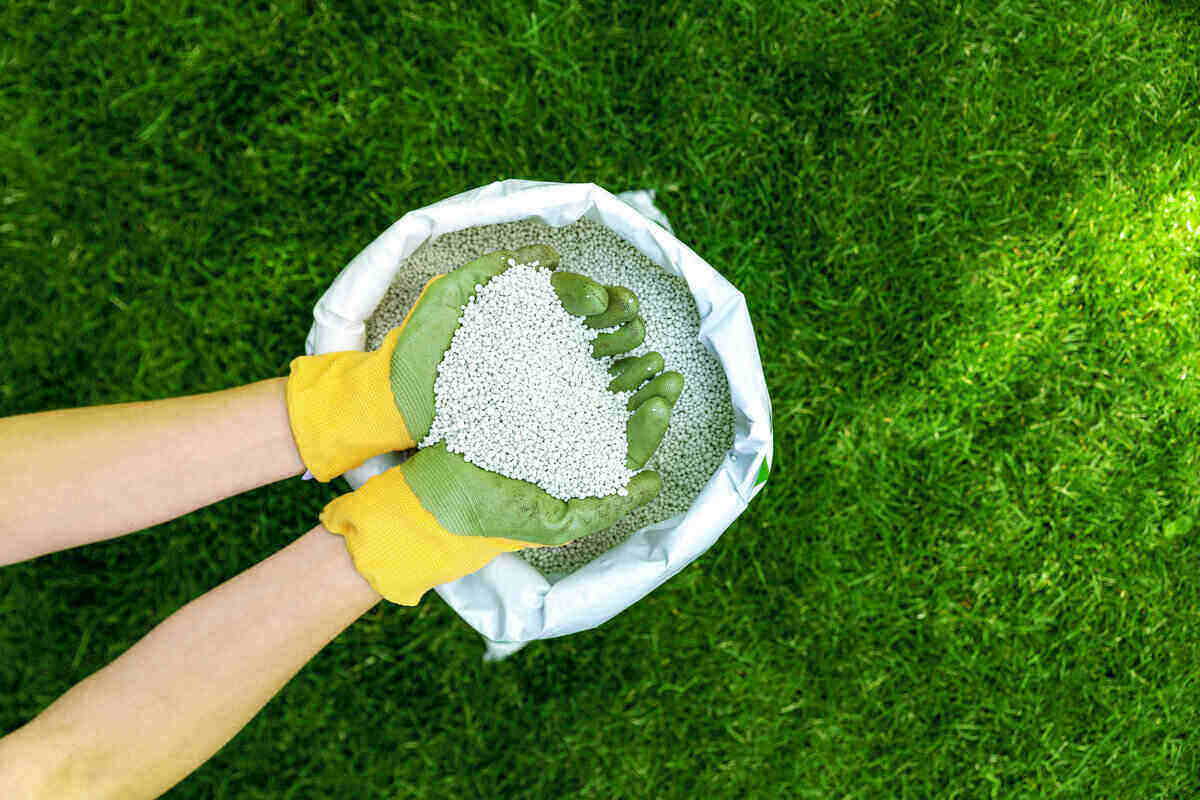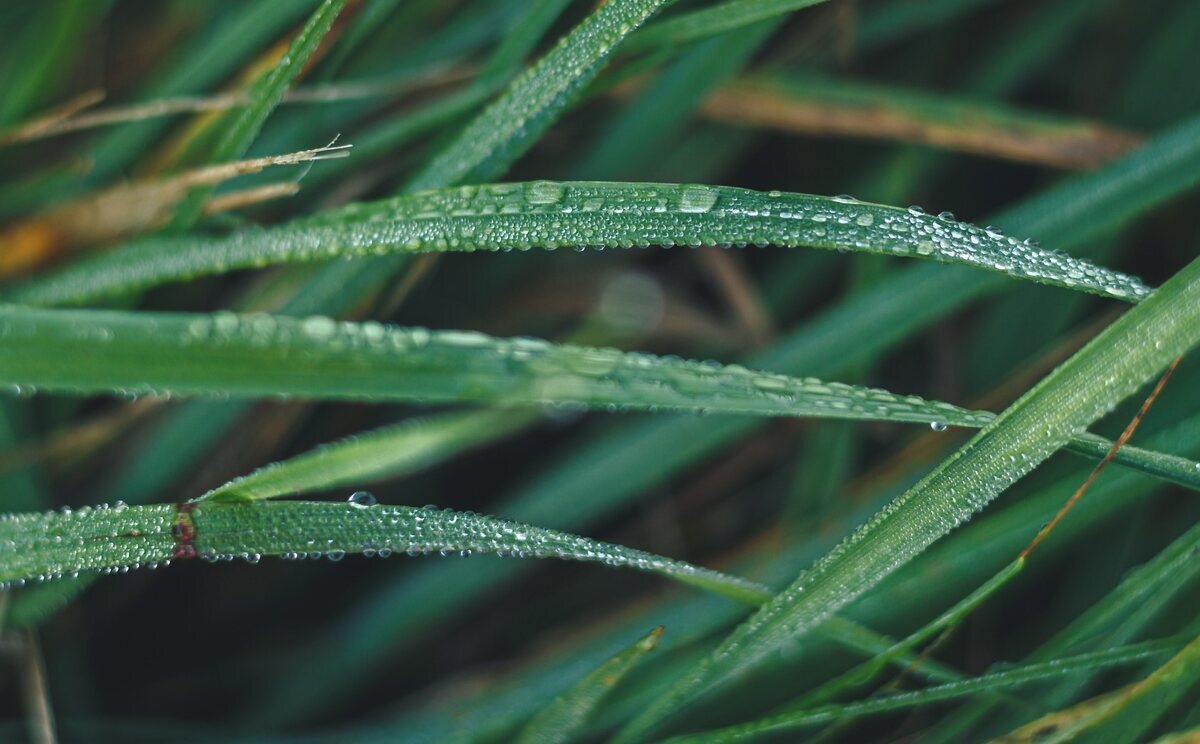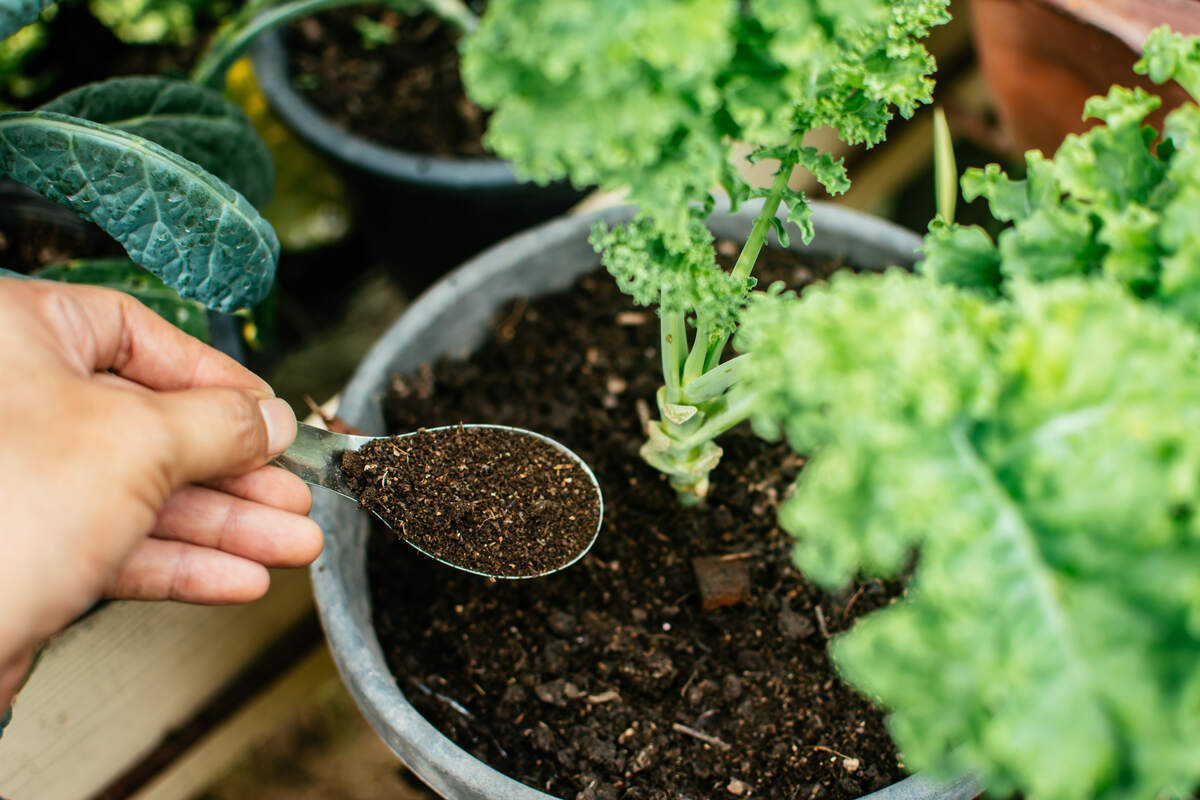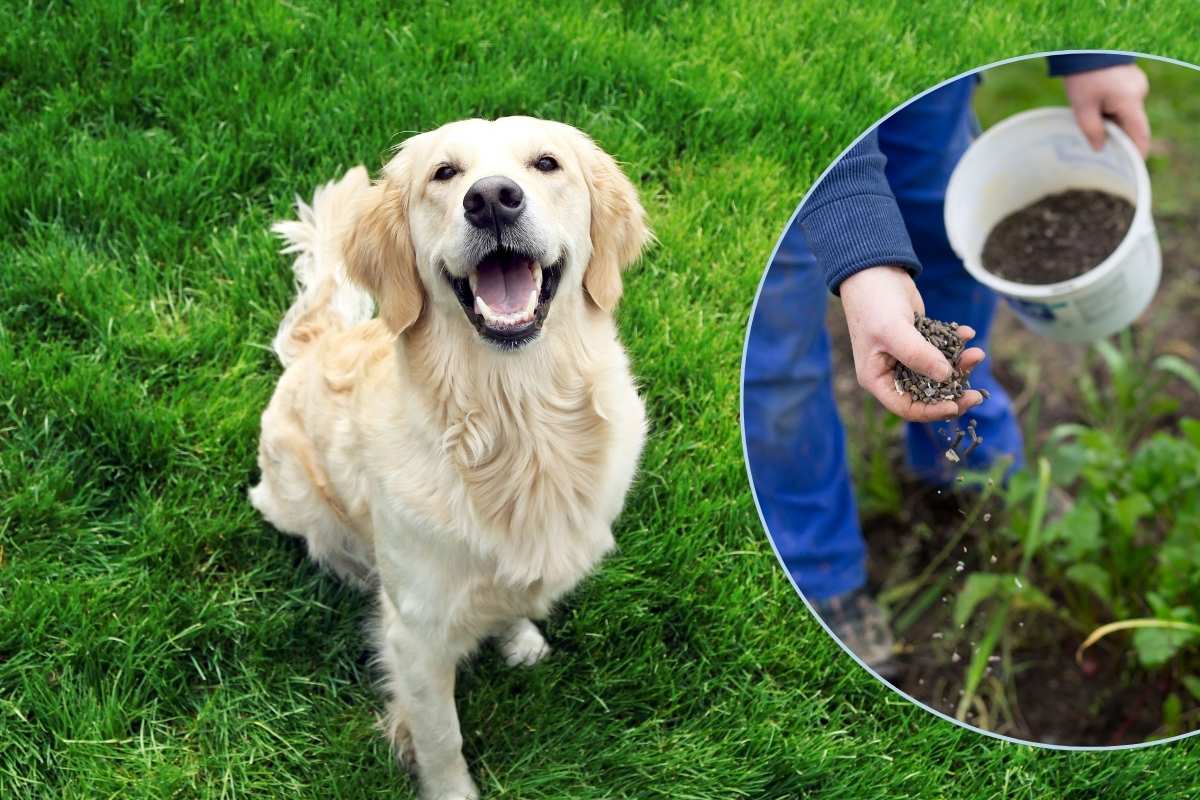
Lawn fertilizers are bad for dogs if ingested, especially when they contain toxic additives. Surprisingly, some organic, natural products can do lots of harm, too.
Dogs love running through tall, lush grass, but the fertilizers that keep it green and thick might threaten their health. Read this guide to learn what makes garden fertilizers toxic for dogs, which are the most dangerous products, and how to keep your pet safe while adequately caring for your grass and plants.
Can Fertilizer be Harmful to Dogs?
Yes, fertilizer can be harmful to dogs when ingested. Even small amounts of fertilizer can cause symptoms ranging from an upset stomach to severe pancreatitis. Below, we’ll discuss some of the main factors that make fertilizers harmful for your canine friend:
1. Ingested Amount
Most fertilizers are not harmful or cause only mild symptoms when dogs consume small amounts while chewing on fertilized grass or licking their paws after a walk on the lawn.
However, more severe health problems typically arise when dogs break into the fertilizer bag or spreader and munch on granules directly from the source. In this case, gastrointestinal symptoms like vomiting and diarrhea almost always appear because the body can’t handle the high nitrogen content.
Can fertilizer kill dogs? The danger level depends on your fertilizer composition. For example, a teaspoon of fertilizer containing 1% disulfoton can be lethal for a 55-pound dog. By comparison, a teaspoon of regular N-P-K fertilizer without harmful additives can pass through the body of a large dog without any symptoms or just mild diarrhea and vomiting.
Your dog’s size also matters. The same amount of ingested fertilizer can lead to mild symptoms in a large dog and severe ones in a puppy or a small breed.
2. Toxic Additives

Garden fertilizers contain various amounts of nitrogen, phosphorus, and potassium (potash), as indicated by the N-P-K ratio (the three numbers you see on the fertilizer label, such as 10-0-4). Some also have trace minerals, such as boron, cobalt, copper, iron, manganese, or zinc, and toxic additives, like pesticides, that can cause health issues if ingested.
Fertilizers are more dangerous to dogs when these toxic additives are included (especially weed and feed fertilizers, which are not safe for dogs because they contain herbicides). Look carefully on your fertilizer’s label for the following ingredients that come with a higher risk of toxicity:
- Iron: While adding iron to your lawn gives you that lush green color, it can be dangerous for dogs. Ingesting iron in high amounts can lead to iron poisoning. Symptoms start with diarrhea and vomiting in the first six hours after ingestion. Though rare, iron toxicity can lead to coma when large amounts are ingested.
- Disulfoton: Disulfoton is an insecticide sometimes added to granular rose fertilizers and is extremely dangerous for dogs and cats. One single teaspoon with 1% disulfoton can kill a 55-pound dog. Symptoms include increased salivation, tear production, vomiting, rapid breathing, tremors, increased heart rate, and seizures.
- Pesticides: Organophosphates, carbamate, and some pyrethroids are among the most toxic to pets. They attack the nervous system and can lead to seizures and coma.
- Herbicides: Glyphosate, 2,4-dichlorophenoxyacetic acid (2,4-D), and 4-chloro-2-methylphenoxy propionic acid (MCPP) are three weed killers to keep away from your dog. Toxicity symptoms range from vomiting and diarrhea to ataxia and tremors.
- Urea: Often used as a nitrogen source in residential-use fertilizers, urea can be toxic for dogs. Ingestion in small amounts leads to gastrointestinal symptoms. Large ingestions can lead to methemoglobinemia (hemoglobin can no longer carry enough oxygen to organs and tissues).
See Related: Fertilizer Numbers: What They Mean and How to Use Them
3. Attractive Smells
Surprisingly, some organic fertilizers considered safe for the environment can be hazardous to pets because of their attractive aroma. For us, they smell bad, but for your dog, they smell like delicious food.
- Bone meal in large amounts can obstruct the intestines and require surgical intervention.
- Fish meal and feather meal are not toxic per se, but when eaten in large amounts they can cause vomiting and diarrhea.
- Blood meal can cause pancreatitis (e.g., inflammation of the pancreas) in addition to an upset stomach. Blood meal fertilizers also contain high levels of iron, so there’s an added risk of iron toxicity.
- Cocoa mulch also has an attractive smell for dogs. This type of mulch is made from the hulls and shells of cocoa beans and contains theobromine, which causes chocolate poisoning. If the dog ingests too much, it can cause mild to severe symptoms, including drooling, vomiting, tremors, and seizures.
If they just sniff the fertilizer, there’s not much of a risk; the real problem is that such products are more likely to drive pets to dig into fertilizer packages and eat large quantities. They might even eat them from the soil if you allow access to the yard soon after spreading.
Warning! Mixing such fertilizers with pesticides or herbicides increases the risk of ingestion and severe toxicity. Your dog also might be tempted to eat poisonous plants or bulbs that are covered in an animal-derived fertilizer.
4. Moldy Fertilizer
Any type of solid fertilizer can become toxic to your dog if it is moldy. Mold contains tremorgenic mycotoxins that trigger symptoms within an hour after ingestion. Common clinical signs of mold toxicity include:
- Hyperactivity
- Weakness
- Tremors
- Vomiting
- High body temperature
- Convulsions in severe cases
Keep the fertilizer containers closed and stored in a dry, ventilated space to prevent mold. Packages kept open can be infested even if mold is invisible to the naked eye.
Types of Fertilizer and Their Risks
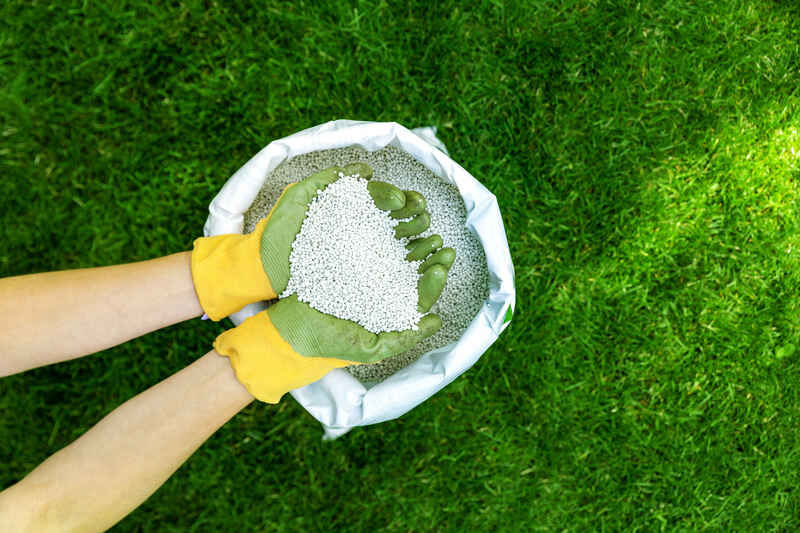
Both organic and chemical fertilizers can be risky for your four-pawed friend. Ingesting too much of a fertilizer, even one labeled as safe for kids and pets, may cause serious symptoms.
Organic Fertilizer
Some organic fertilizer brands market themselves as safe for pets and kids, but take these statements with a grain of salt. If your dog ends up eating a large amount of organic fertilizer, this can lead to an upset stomach or more dangerous conditions, such as bowel obstruction and pancreatitis.
To be on the safe side, choose fertilizers with the OMRI label to guarantee an organic product, and watch for animal ingredients (such as blood meal). Also, follow the label’s instructions when you apply the fertilizer to your lawn and plants — don’t overapply. It won’t help your lawn or your pets.
Chemical Fertilizer
Commercial landscaping fertilizers come in two primary forms: liquid and granular. Neither category is 100% safe for pets, even if labeled “pet-friendly,” and should be appropriately stored where dogs and cats can’t reach it.
- Liquid fertilizer is absorbed by plants and soil relatively fast. After it dries out, your lawn and garden are typically considered safe for pets. When you apply liquid fertilizer to potted plants, it can overflow at the pot’s base, where dogs can drink it. Keep pets away from freshly fertilized pots and wash the overflow.
- Granular fertilizers require water (rain or irrigation) to dissolve into the soil. Most experts recommend watering the lawn or garden and allowing the soil and fertilizer to dry out before letting the dog out for a walk.
To always be on the safe side, wait 48 to 72 hours after a fertilizer application before allowing the dog back into your yard.
Signs Your Dog Has Ingested Fertilizer
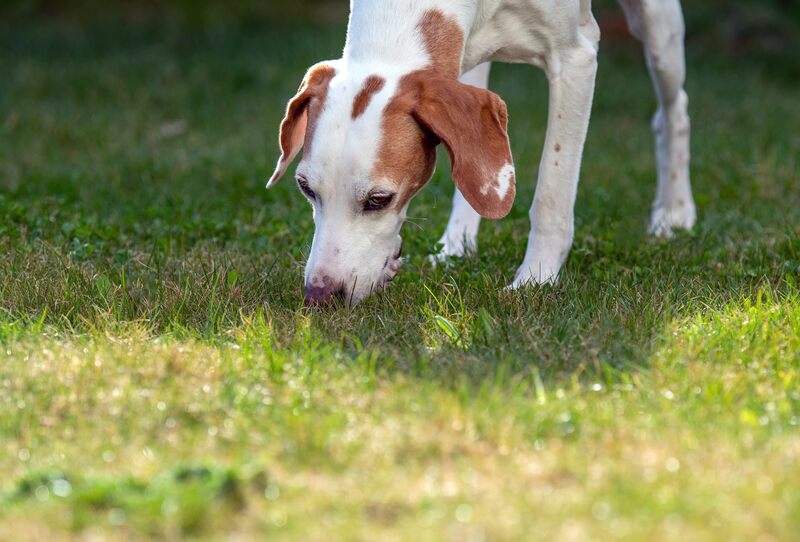
The ingestion of regular N-P-K fertilizers typically leads to gastrointestinal irritation and connected clinical signs such as abdominal pain, vomiting, and diarrhea. Symptoms are often mild and not life-threatening.
If the fertilizer contains toxic insecticides such as organophosphates, you can expect to see more severe symptoms reflecting health issues with the gastrointestinal and nervous system:
- Drooling
- Uncontrolled urination and defecation
- Weakness
- Inability to stand and walk
- Disorientation or loss of balance
- Irritation to the skin, eyes, or mucous membranes
- High or low heart rates
- Difficulty breathing (due to bronchoconstriction)
- Tremors
- Seizures
- Coma
- Death
What to Do If Your Dog Eats Fertilizer
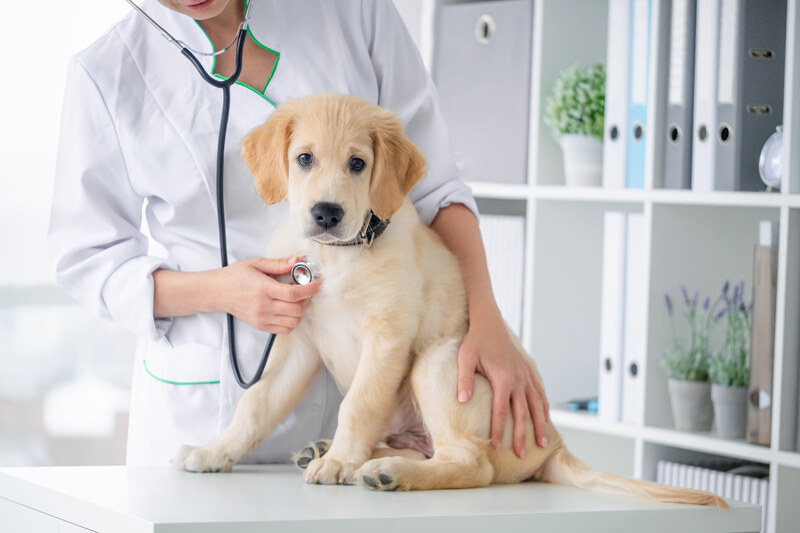
Determining what fertilizer your dog consumed and how much it ingested is critical. This speeds up diagnoses and treatment. Look for the fertilizer package or what’s left to check the ingredients. Figuring out if your dog ingested toxic additives like iron or disulfoton improves recovery chances.
Call your vet, the ASPCA Animal Poison Control Center, or the Pet Poison Helpline. They’ll tell you what to do next. Induce vomiting at home only if instructed to do so by a healthcare professional.
What to expect at the vet:
- Your dog will be examined.
- An X-ray might be necessary to check for bowel obstruction if it ingested bone meal or blood meal.
- In some cases, vomiting meds are administered to evacuate the toxic meal.
- Pumping the stomach or stomach lavage is used when vomiting meds don’t work.
- If severe vomiting is a symptom, your dog will receive anti-vomiting meds.
- An IV is sometimes administered to help the dog flush out the toxins in the body.
How to Keep Your Dog Safe From Fertilizer
A few precautions on the front-end will save you and your dog from heartache (and stomachaches) later on:
- Choose pet-friendly fertilizers with no pesticides among the ingredients.
- Check the fertilizer ingredients on the package.
- Store fertilizers and other garden chemicals in your garage or another locked space.
- Keep bags and containers closed, and don’t leave a filled fertilizer spreader unattended.
- Keep the dog safe and away from the lawn and garden when applying fertilizer and when using other garden products.
- If you apply bone meal, blood meal, or other animal-derived fertilizer, cover the area with topsoil or mulch and water the area to reduce the attractive smell and reduce concentration.
- Don’t let the dog outside unsupervised if you recently fertilized the garden.
- Avoid using cocoa mulch in areas accessible to your dog. Limit the access by installing a fence or use a less risky type of mulch like shredded bark, dead leaves, or grass clippings.
Dogs are playful and sometimes escape outside. What should a pet owner do if the dog walks on freshly fertilized grass? Bathe your dog to remove any chemicals on its fur and paws. If you suspect your dog ingested fertilizer, look for any signs of fertilizer toxicity and call the vet.
See Related: How to Fertilize Your Lawn
Pet-Friendly Fertilizer
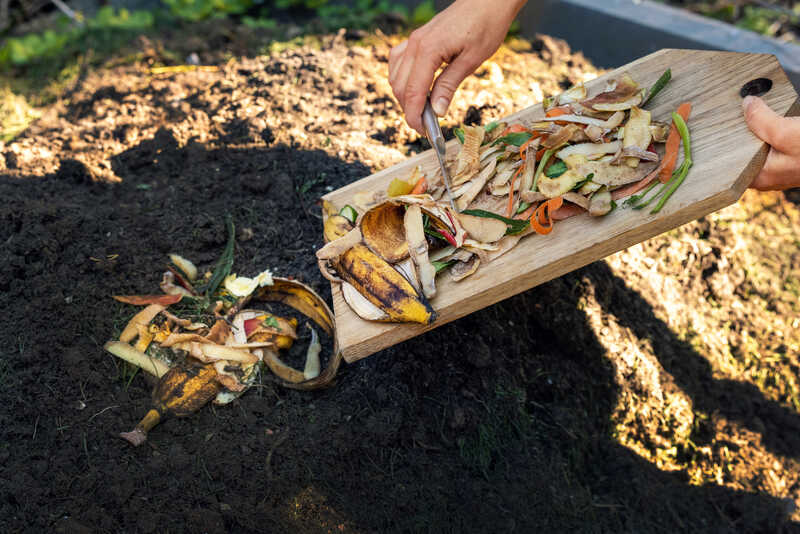
Pet-safe lawn fertilizers are organic, natural products free of toxic chemicals that could harm pets. Natural dog-friendly fertilizers to consider are:
- Compost: Not so palatable for dogs that they would consider it good food, compost, with its balanced nutrients, makes an excellent, dog-safe fertilizer for your lawn and veggie garden.
- Seaweed (kelp meal): You can buy kelp meal as a liquid fertilizer to spray on your soil, as a powder, or in its natural form to use as mulch or dig into your topsoil. Unlike bone or blood meal, kelp meal is vegetarian and doesn’t attract dogs.
- Grass clippings: The most straightforward and safest way to fertilize your lawn is to leave the grass clippings on it after mowing. Grass clippings are a budget- and pet-friendly lawn care alternative to fertilizers.
FAQ
Fertilizers mixed with highly toxic insecticides such as organophosphates are the most dangerous for dogs. Bone meal, blood meal, and cocoa mulch are also harmful when ingested in large amounts.
Dogs are especially attracted to fertilizers that contain appealing ingredients, such as:
• Bone meal
• Blood meal
• Fish meal
• Chicken feather meal
• Cocoa mulch
Yes, dog owners can use plant fertilizer. Keep the dog in the house while spreading fertilizer in your garden or lawn, and prevent them from entering the fertilized area for at least 48 hours after application. If you’re fertilizing indoor plants, ensure the dog can’t reach the pots or any water mixed with fertilizer that might leak out.
How Can a Lawn Care Pro Help?
Fertilizer is bad for dogs and other pets if you choose, store, or apply it incorrectly. A lawn care pro can help you select the safest option, ensure proper application, and provide the recommended waiting time before your dog is allowed back into the fertilized space.
Most lawn care pros use their own fertilizers, so you won’t need to store yours and worry about Fido getting in the garage and turning it into lunch. Find a local lawn care company with LawnStarter, put your fertilizer worries to rest, and enjoy your pet-safe lawn.
See Related:
- How Much Does Lawn Fertilization Cost in 2025?
- 7 Common Fertilizer Mistakes to Avoid
- 5 Tell-Tale Signs Your Lawn Needs Fertilizer
Teresa Joaquim contributed to this article.
Main Image Credits:
Fertilizing: Khaligo / Adobe Stock Free / License
Dog: Africa Studio / Adobe Stock Free / License

